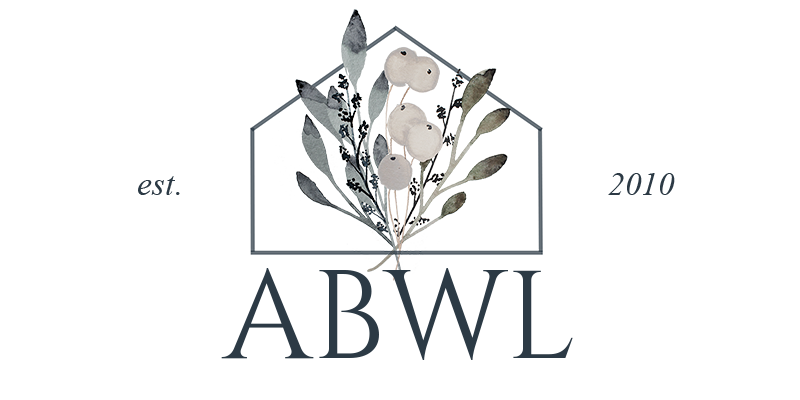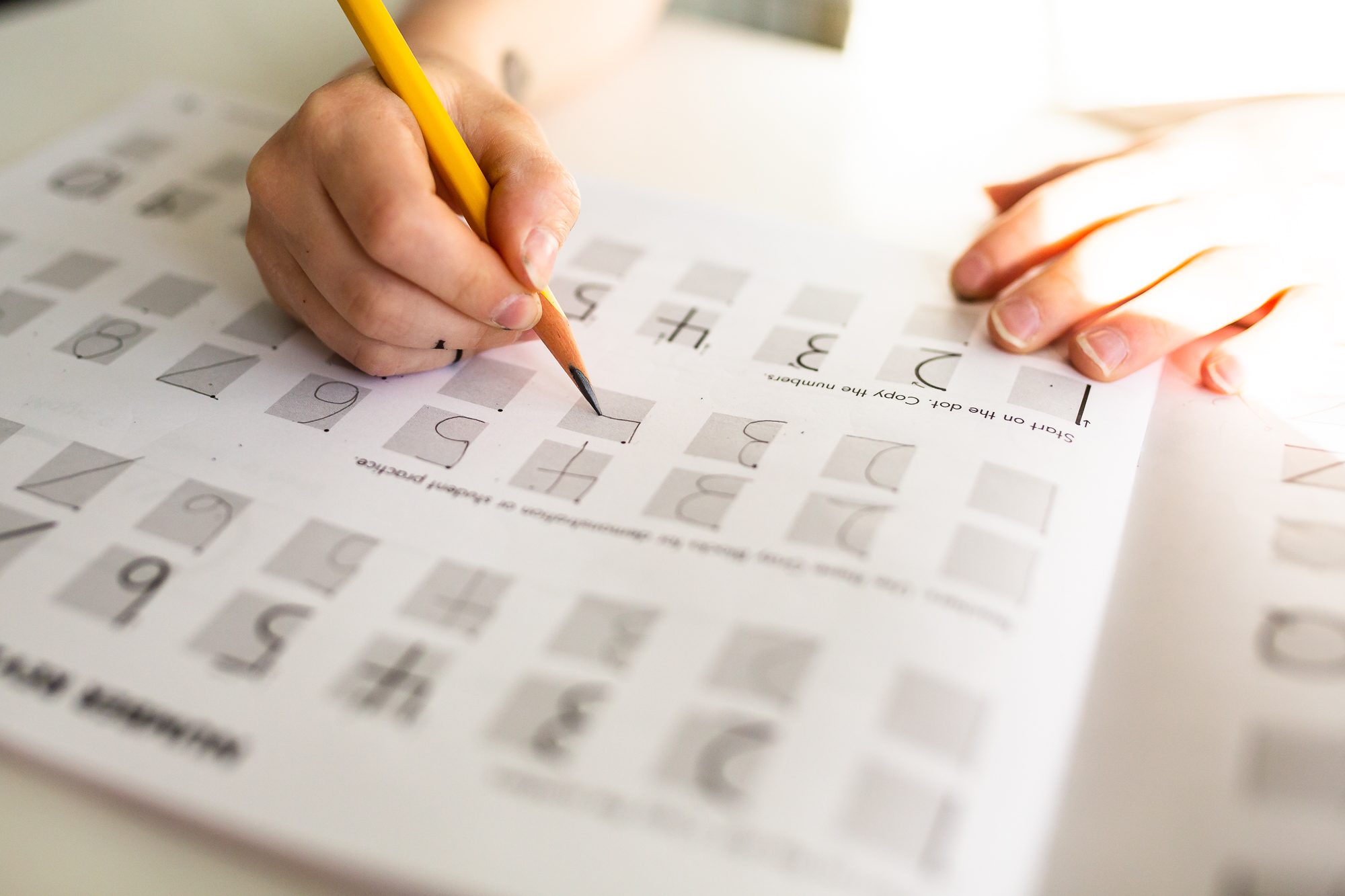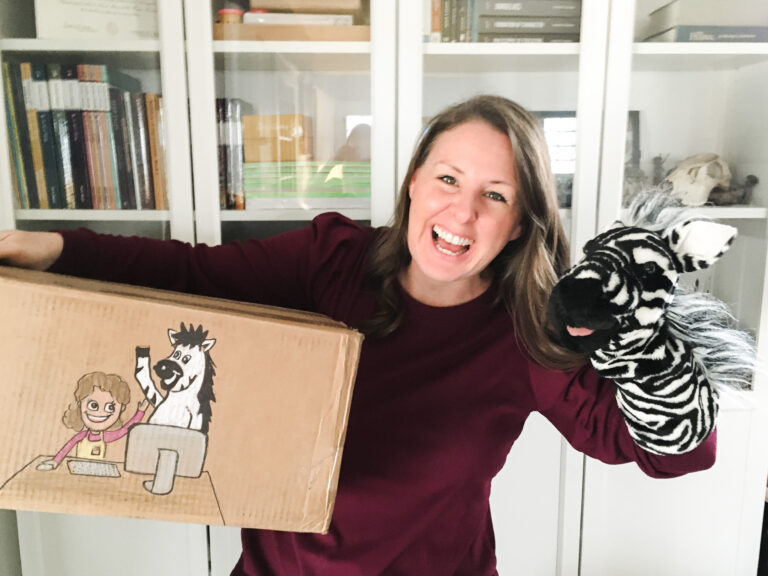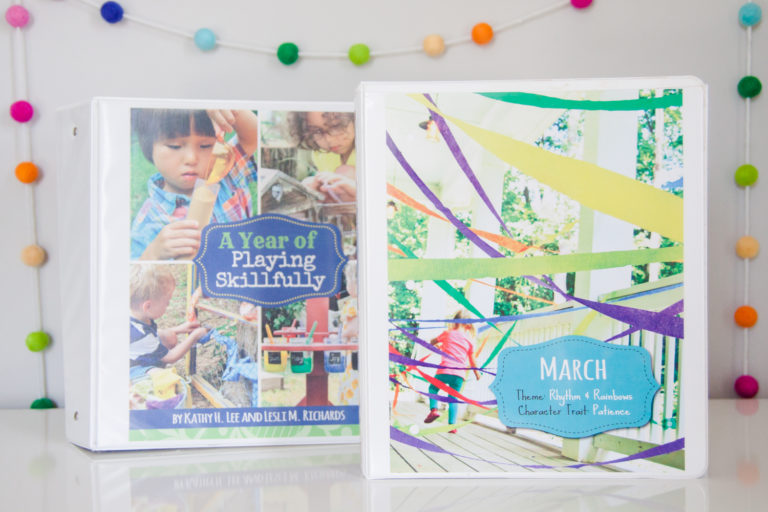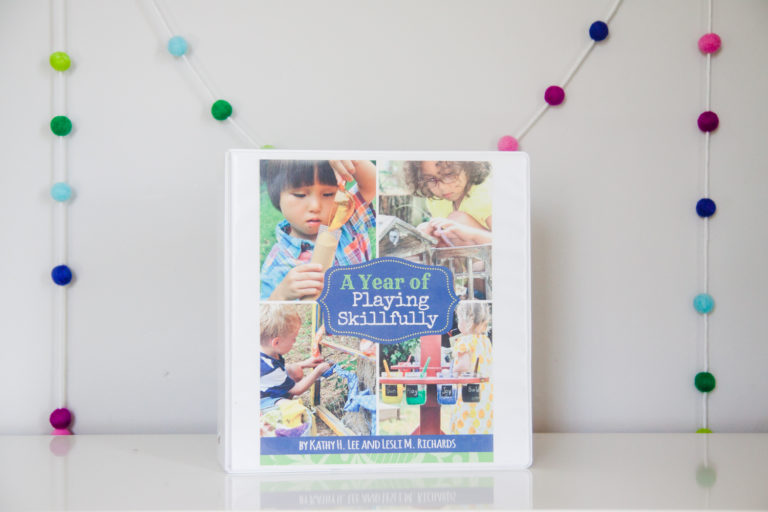I promised you in a previous post that I would go into more detail about what led us to discover that our oldest son, Mr. Nine, has dyslexia. Today, I want to share our story.
So first, my background is in special education. I taught middle and high school students with “mild” disabilities – the kiddos who were on track to earn high school diplomas and simply needed additional academic support and accommodations to be successful.
Many of my students had “specific learning disabilities” in reading and written expression. At the time I was in the classroom, students were not identified as having dyslexia, as that language wasn’t yet required by law (I left the classroom in 2017, and I honestly don’t think much has changed) and as educators, we were told that it didn’t actually matter what kind of reading disability it was – we would respond to all of them the same way. (I cannot tell you how frustrating that is to me now.)
Because of my background, I am very familiar with various disabilities, how to identify them, how they present in the classroom, and how to best accommodate them.
But shockingly, I wasn’t well-trained on dyslexia specifically. As I was going through college, the heavy focus was on autism (to the exclusion of other disabilities). I spent many classes learning everything there was to know at the time on autism, how it presents, how to best meet the needs of students with autism, etc. It was important, because I did have a large number of students with autism.
But my frustration now, as a homeschooling mom with a kiddo who very likely has dyslexia, is that my very fancy (and very expensive) college education AND my years as a special education teacher failed to teach me what I needed to know about dyslexia. In fact, they failed to teach me much about dyslexia at all.
I say all of that because my background has both helped and hindered the journey we’re on now.
MR. NINE’S EARLY EDUCATION
My nine-year-old son is a bright, creative, energetic boy with beautiful drawing skills and a perception for the natural world that never fails to impress me. He reads pretty well, and he loves to make up stories for the beautiful, fantastical pictures he draws.
And yet, despite his intelligence, he has struggled with spelling and handwriting from the beginning.
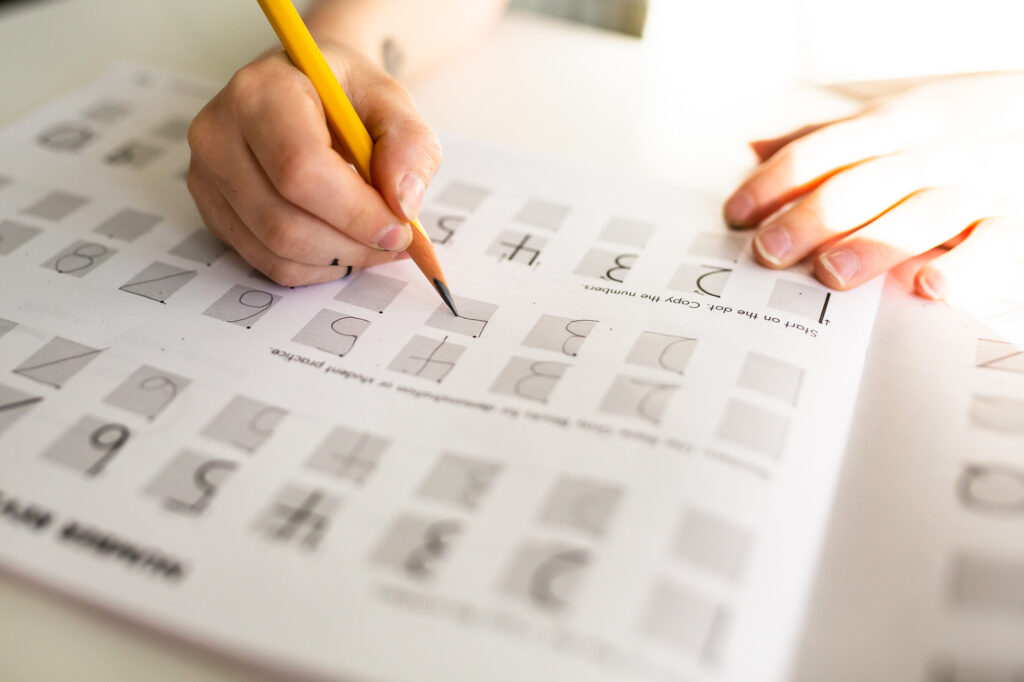
We actually started preschool when he was 4 years old (because I hadn’t truly met Miss Mason yet and I was so eager to start homeschooling). Preschool was a beautiful, fun-filled year that was full of play, exploration, and discovery. For his Transitional Kindergarten (TK) and Kindergarten years, we did Handwriting Without Tears and All About Reading (among a number of other subjects). Again, they were beautiful, low-stress years in which we gently dipped our toes into the big ideas of reading, writing, and math, but focused heavily on nature study and enjoying really high-quality literature.
Mr. Nine was consistently reversing his letters when he wrote, but at 5/6 years old, that’s so completely normal that I thought nothing of it. He learned the alphabet with ease, and by the middle of his TK year, we’d completed Pre-Reading and we were starting AAR Level 1. He did really well with all of the phonological awareness activities in Pre-Reading, he quickly caught on to blending in Level 1, and we officially had a young reader in the house!
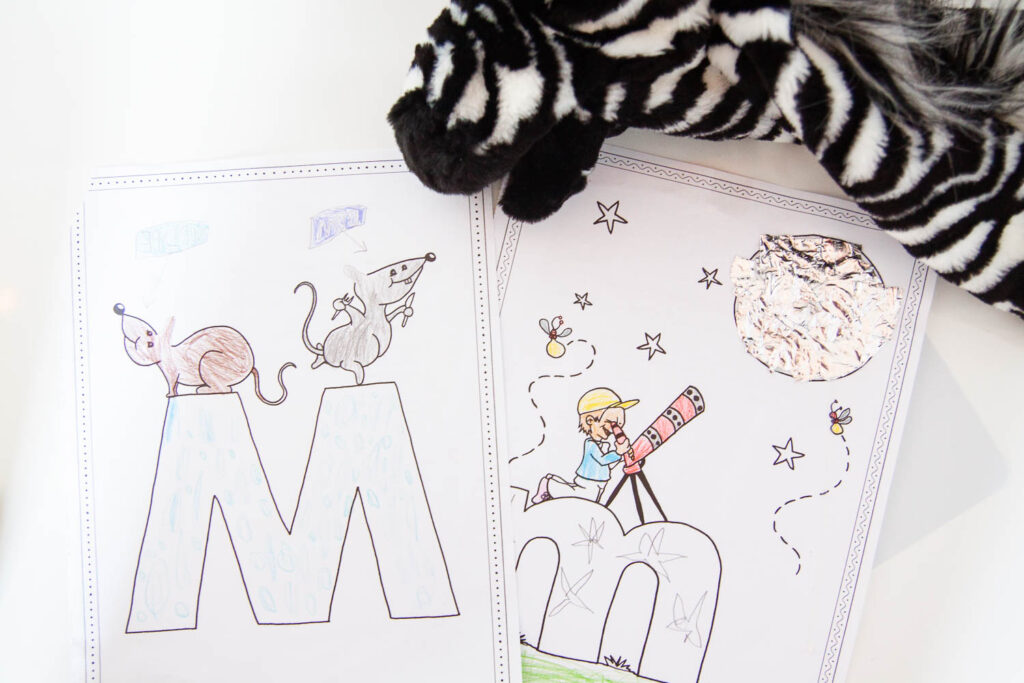
All About Reading Level 1 did take us a full year and a half to finish, but knowing that every kiddo moves at a different pace, I wasn’t concerned. I wasn’t worried about “keeping up” with anyone or pushing him to move faster than he was ready.
The thought of dyslexia never once crossed my mind because:
- He was reading without seeming to struggle at all. He wasn’t a fast or fluent reader yet, but he was making steady, forward progress.
- He was (and is) so smart! He was making connections across subjects, had a high listening comprehension, and had an extensive vocabulary, even at 6 years old.
THE EARLIEST SIGNS OF DYSLEXIA
It wasn’t until Mr. Nine was in first grade (7 years old) that I really began to suspect that something was going on. He continued making steady progress in reading. We had started AAR Level 2 by then, and other than some bumps in the road with fluency sheets (nothing that some chocolate chip rewards couldn’t fix), I wasn’t concerned about his reading skills.
And dyslexic kids have a really hard time learning to read, right?!?
My concerns were mostly with his writing at first. Mr. Nine (7 at the time) was still reversing his letters and numbers. And not just b/d reversals, but any letter or number at any given time and not consistently, even on the same page. He was AMAZING at mirror writing – he could write whole words perfectly backwards!
And he absolutely would not (could not) start his letters at the top when writing, which is a HUGE focus of Handwriting Without Tears. There’s even a jingle about starting letters at the top! But he consistently wrote his letters from the bottom to top, and from right to left (and still does).
So for a while, our issues seemed limited to handwriting. His handwriting wasn’t sloppy at all, he didn’t have a poor pencil grip, and his hand didn’t cramp when writing. It was just that the letters and numbers were often written backwards.
But every time I’d research the issues we were seeing, the literature would remind me that dyslexia is a reading problem, and therefore not what we were dealing with. Most literature pointed us to dysgraphia.
But that didn’t make sense, either, because Mr. Nine is an artist. He draws – and has since he was very young – beautiful, intricate pictures filled with detail and creativity. His handwriting is neat, he can easily stay in the lines, and when given a text to copy on the same page, he can do that well. We’re not dealing with a motor skill issue.
But then there were his letter and number identification errors. He’d known the alphabet and numbers for a couple of years at that point, yet still mixed up b/d, p/q, 5 and S, 5 and 2, etc., etc. He’d read 12 as 21, 512 as 251, and he struggled terribly with the teens. (All of these issues still persist today.) When reading aloud, he frequently read “was” as “saw” and “of” as either “for” or “from.”
It seemed like the further along he progressed in both reading and math, the more pronounced these errors became. He was reading multisyllabic words with both open and closed syllables, prefixes, and suffixes, yet couldn’t seem to recognize “was” and “of,” or added and subtracted sounds to and from words. He was adding, subtracting, and multiplying numbers in the hundreds, but still struggled to recognize 17 versus 71.
That didn’t seem consistent with dysgraphia, so I continued researching. Visual processing disorders kept coming up as a possible answer to our struggles. And while some aspects of that did fit the signs we were seeing, there were more that did not.
I remember when he was only 4 or 5 years old, he drew a beautiful dragon picture. The dragon’s tail didn’t fit on the page, but he was able to visualize where the tail would go off of the page and then wrap around to come back onto the page. He’s always been able to see the most minute details in nature, too, and draw them into his nature notebook very accurately. Additionally, whenever we’ve given him any kind of visual discrimination assessments, however informal, he does very well on them.
His issues have always been isolated to how he processes the written word.
PUTTING THE PIECES OF THE DYSLEXIA PUZZLE TOGETHER
At the beginning of Mr. Nine’s second grade year, we added All About Spelling to our homeschool curriculum. He did really well with alphabetizing, letter-sound correspondence, and applying the early rules he learned. It definitely went a lot slower than reading, as he needed much more practice and reinforcement to truly learn the spelling rules. But just like in reading, he made steady forward progress in spelling.
But by the spring of his second-grade year, we had hit a wall and I was really seeing red flags.
After 3.5 years of explicit handwriting instruction, he was still writing bottom to top, right to left, and often backwards. He also had a really hard time with letter spacing and consistency. Instead of writing all in lowercase, his writing was (and still is) a mix of uppercase and lowercase letters. He also still has to put a pencil or finger between his words in order to leave a space between them, otherwise his writing is just one long run-on word.
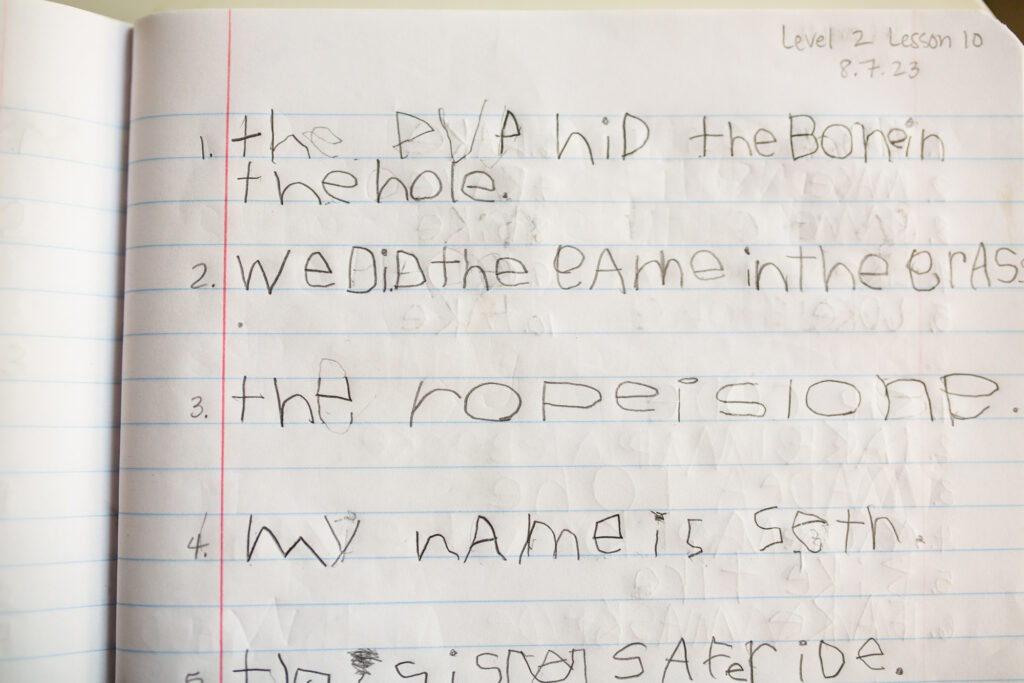
In spelling, he was struggling tremendously to remember and apply the rules (when to use a C versus K, for example, is one he STILL has a hard time with). His spelling was often very inconsistent, as he could spell a word correctly one day, but not the next. Or even on the same page!
In reading, the subject I thought was going the best, I started to really hone in on some issues that I’d overlooked before. He was progressing well and reading pretty fluently, so I didn’t notice how specific his errors were. He often skipped words, added words, switched words, dropped letters out of words, and added letters into words. It was as if he would look at a word and see letters that weren’t there.
GOING INTO RESEARCH-MODE
As I mentioned before, I was a special education teacher, and while my college education wildly underprepared me to teach students with dyslexia, I was at least familiar with it. I had always dismissed it out of hand because he could read and was making steady progress through AAR. My teacher training had taught me that kids with dyslexia have a very difficult time learning to read, so I assumed it couldn’t be that.
But then I landed on the University of Michigan’s Dyslexia page, and specifically started reading through the Clues to Dyslexia. He could check almost every box for the Grades 2-3 section. Then I started giving him some informal evaluations, such as asking him to add, delete, and substitute phonemes in words (such as say “start” without the beginning ‘s’). He struggled incredibly, which surprised me, because he’s always been really good at counting syllables and rhyming. However, those are larger phonological awareness skills and I was really focusing in on phonemic awareness skills, and found that’s where he struggles.
That led me to more research. I went through All About Learning Press’s Symptoms of Dyslexia Checklist and read everything I could find about the different ways dyslexia can present. By that point, I was smacking my forehead, wondering how in the world I had missed all of the red flags.
Eventually, I found the book Overcoming Dyslexia by Sally Shaywitz (an absolute must-read book if you have or suspect you have a kiddo with dyslexia). I read the entire book in about a week, and dog-eared and highlighted SO MANY pages. It was like I could finally see what was going on in his brain, and we were checking FAR MORE of the boxes for dyslexia than I expected.
I learned that while many kids with dyslexia do have trouble learning to read, some of them learn to read okay, but struggle so much more with spelling. And that has been our experience with Mr. Nine. He does struggle with some aspects of reading, but it’s spelling that really gives him the most trouble.
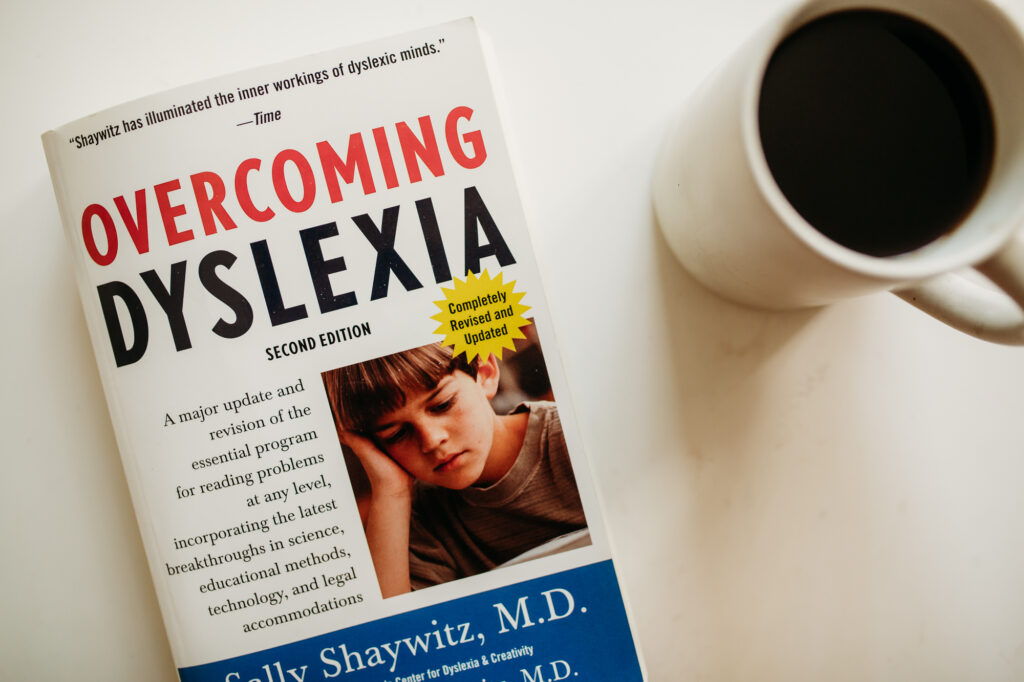
DYSLEXIA INTERVENTIONS IN OUR HOMESCHOOL
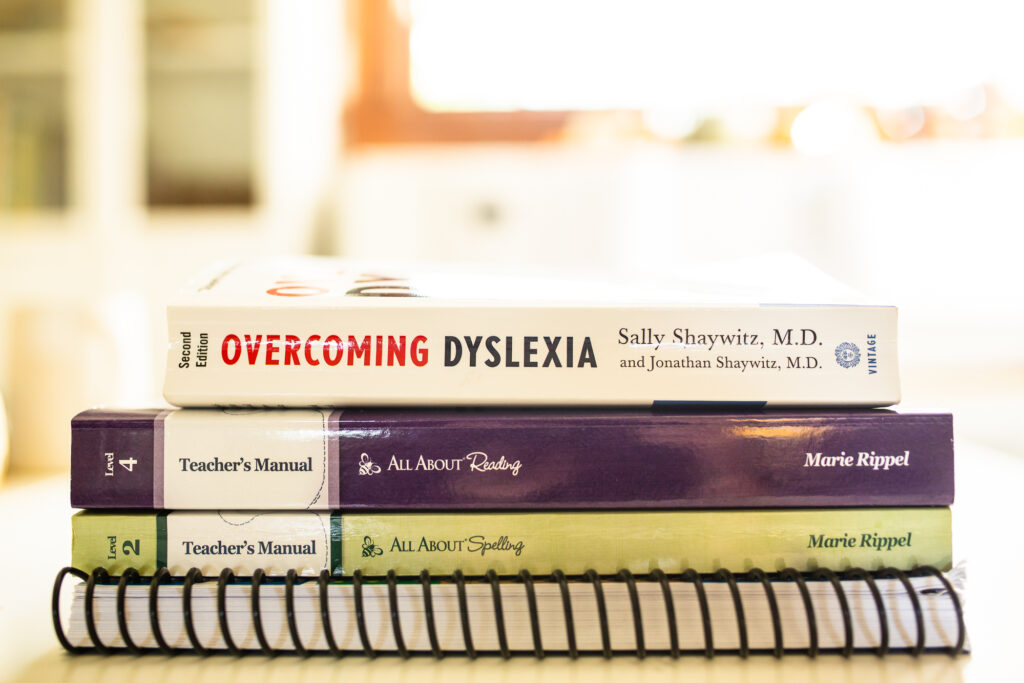
So what are we doing in our homeschool to address the dyslexia? For the most part, the same thigns we were doing. We were already using All About Reading and All About Spelling, which are Orton-Gillingham-based programs specifically designed for teaching kiddos with dyslexia. We did add in Heggerty’s Bridge to Intervention program to really work on Mr. Nine’s phonemic awarness skills and build those linguistic “muscles.”
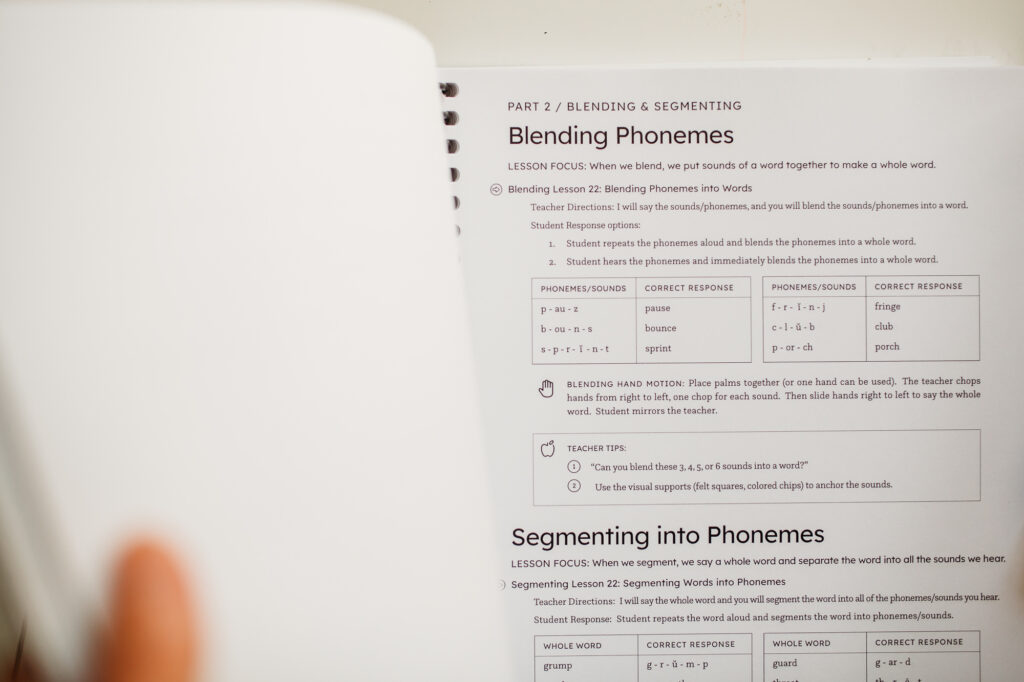
The other thing we did was ever so slightly change how we approach All About Spelling. Our lessons are pretty much the same as before, but we added in Elkonin boxes for word practice, and added back in segmenting with the tokens for a time. Those two super simple changes really helped Mr. Nine focus on each individual sound in the words he was spelling.
We also recently added in Touch Type to Read and Spell, an Orton-Gillingham-based typing program that teaches keyboarding while also reinforcing spelling and reading skills. Mr. Nine loves learning to type and I love that it compliments AAR and AAS. He literally said at the end of one of their dictation lessons, “How does it teach me to type AND spell at the same time?!?”
The biggest thing we’re doing, though, is really making sure to review reading and spelling concepts often. Dyslexia affects the way the brain processes language and those neural letter-sound connections need A LOT more work to form and maintain in a dyslexic brain than a neurotypical brain. AAR and AAS‘s built-in, fully-customizable review system is PERFECT for Mr. Nine, because we’re able to keep those cards circulating constantly. Instead of a “teach it and forget it” approach, we teach it and then practice and review it until it’s as second-nature as breathing.

DYSLEXIA EVALUATION: TO TEST OR NOT TO TEST
One of the things my husband and I have talked a lot about it whether or not to have Mr. Nine evaluated so that we can receive an official diagnosis. We’ve ultimately decided to go ahead and have him evaluated for a couple of reasons.
First, by having a full neuropsychological evaluation and receiving a diagnosis for him, it’ll be easier to get him any necessary accommodations on tests such as the SATs or ACTs. We don’t know what his future will hold, but we want to do everything we can to set him up for success no matter which path he takes (college, trade school, creative field, etc.).
Another is just knowing for certain what’s going on in his brain and being able to fully support him as he goes through school and prepares to advocate for himself. In our house, dyslexia has become a common word. Mr. Nine knows that’s likely what he has and he knows how it affects him. He’s already spoken up a few times to tell people that he has dyslexia and that it makes reading and spelling a bit more challenging for him. Having a diagnosis won’t change how we teach him to advocate for himself, but it will give us the full picture about how his brain works. It won’t be something he has to wonder about as an adult.
The only downside is that in our area, full neuropsych testing is expensive and the waitlists are long. We’re currently on a waitlist that’s between 6 months to a full year. Thankfully we’re not in any hurry, but it’s crazy to me how difficult it is to access services like this!
So that’s where we are right now. Still waiting on the full eval to receive an official diagnosis (but also VERY confident that’s exactly what we’ll get) and putting the most effective, research-based interventions in place so that Mr. Nine has every possible chance of success.
WHAT ABOUT YOU, ARE YOU HOMESCHOOLING ANY KIDDOS WITH LEARNING DIFFERENCES LIKE DYSLEXIA?

